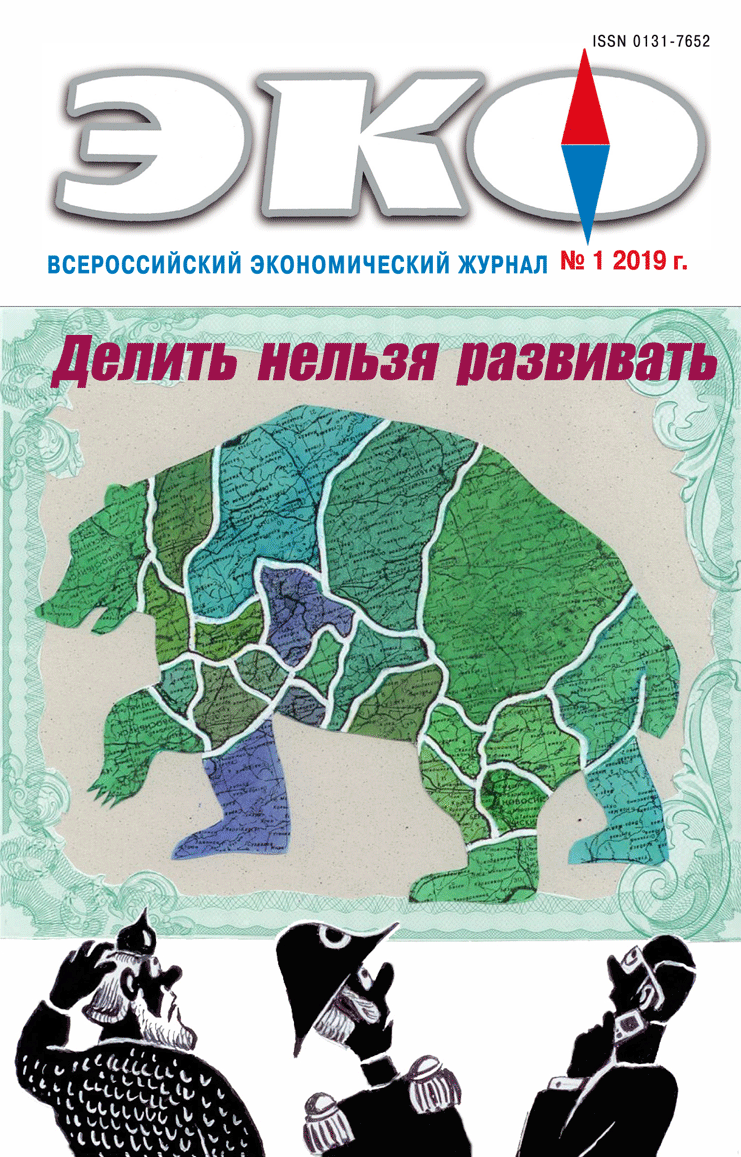MONITORING OF ECONOMIC TRANSFORMATION
Published 2019-01-08
Keywords
- International exhaustion of rights,
- investments,
- localization,
- trademarks,
- branded products
How to Cite
1.
Radchenko Т, Volkov А, Bannikova (Suhorukova) К. Parallel imports in Russia: Areas for Protection, Risk, Development. ECO [Internet]. 2019 Jan. 8 [cited 2025 Dec. 5];49(1):153-67. Available from: https://ecotrends.ru/index.php/eco/article/view/1755
Abstract
In 2014 FAS of Russia proposed to introduce international exhaustion of trademarks rights regime in Russia (legalize parallel import of branded products) step by step for different product groups. Meanwhile FAS of Russia did not present criteria for selection of product groups for introduction of international exhaustion of rights at first. An objective of this study was to formulate criteria for selection of product categories for parallel imports legalization in the first place on the basis of existing experience of the assessment of parallel imports legalization effects and to identify these categories taking into consideration the analysis of the composition of “protected” trademarks (included in TROIS), international trade flows of branded goods and the volume of investments of the right holders in Russia.References
- ООО «Международный институт маркетинговых и социальных исследований “ГфК-Русь”». Исследование финансово-экономических последствий либерализации параллельного импорта в России. 2013 / International institute of marketing and social research GfK-Rus Ltd. (2013). Issledovanie finansovo-ekonomicheskih posledstviy liberalizatsii parallelnogo importa v Rossii [Research on the financial and economic consequences of parallel import liberalization in Russia]. (In Russ.).
- Радченко Т. А., Сухорукова К. А., Левицкий Р. Ю. Ценовые эффекты легализации параллельного импорта // Научные исследования экономического факультета. Электронный журнал экономического факультета МГУ имени М. В. Ломоносова. 2014. Т. 6. № 3. С. 7–24 / Radchenko T. A., Sukhorukova K. A., Levitsky R. Y. (2014). Tsenovyie effektyi legalizatsii parallelnogo importa [Price effects of the legalization of parallel imports]. Nauchnye Issledovaniya Ekonomicheskogo Fakulteta. Elektronnyj Zhurnal Ekonomicheskogo Fakulteta MGU imeni M. V. Lomonosova, 6, 3, pp. 7–24. (In Russ.).
- Burgess M., Evans L. (2005). Parallel importation and service quality: An empirical investigation of competition between DVDs and cinemas in New Zealand. Journal of Competition Law and Economics, 1, 4. Рp. 747–770. Doi: 10.1093/joclec/nhi022
- Dubois P., Saethre M. (2018). On the effect of parallel trade on manufacturers’ and retailers’ profits in the pharmaceutical sector. CEPR Discussion Paper, № DP12649.
- Duso T., Herr A., Suppliet M. (2014). The welfare impact of parallel imports: A structural approach applied to the German market for oral anti-diabetics. DIW Berlin Discussion Paper, № 1373.
- Ganslandt M., Maskus K. E. (2004). Parallel imports and the pricing of pharmaceutical products: Evidence from the European Union. Journal of Health Economics, 23, 5. Рp. 1035–1057. Doi: 10.1016/j.jhealeco.2004.03.005
- Hwang H., Peng C. H., Shiha P. C. (2014). Parallel imports, product innovation and market structures. International Review of Economics and Finance, 34. Рp. 237–245.
- Iravani F., Dasu S., Ahmadi R. (2016). Beyond price mechanisms: How much can service help manage the competition from gray markets? European Journal of Operational Research, 252, 3. Рp. 789–800.
- Kanavos P., Costa-Font J. (2005). Pharmaceutical parallel trade in Europe: Stakeholder and competition effects. Economic Policy, 20, 44. Рp. 751–798. Doi: 10.1111/j.1468–0327.2005.00150.x
- Kanavos P., Costa-i-Font J., Merkur S., Gemmill M. (2004). The economic impact of pharmaceutical parallel trade in European Union Member States: A stakeholder analysis. LSE Health and Social Care, London School of Economics and Political Science, Special Research Paper.
- Kanavos P., Vandoros S. (2010). Competition in prescription drug markets: Is parallel trade the answer? Managerial and Decision Economics, 31, 5. Рp. 325–338. Doi: 10.1002/mde.1486
- Li C. (2006). Competition, parallel imports and cost-reducing innovation. Scottish Journal of Political Economy, 53, 3. Рp. 377–397. Doi: 10.1111/j.1467–9485.2006.00385.x
- Li C., Robles J. (2007). Product innovation and parallel trade. International Journal of Industrial Organization, 25, 2. Рp. 417–429.
- Mantovani A., Naghavi A. (2012). Parallel imports and innovation in an emerging economy: The case of Indian pharmaceuticals. Health Economics, 21, 11. Рp. 1286–1299. Doi: 10.1002/hec.1790
- Maskus K. E., Chen Y. (2004). Vertical price control and parallel imports: Theory and evidence. Review of International Economics, 12, 4. Рp. 551–570. Doi: 10.1111/j.1467–9396.2004.00467.x
- Rozek R. P., Rapp R. T. (1992). Parallel trade in pharmaceuticals: The impact on welfare and innovation. Journal of Economic Integration, 7, 2. Рp. 181–203.
- Swedish Competition Authority (2003). High prices in Sweden – a result of poor competition? Swedish Competition Authority Report.
- Thompson S. (2009). Grey power: An empirical investigation of the impact of parallel imports on market prices. Journal of Industry, Competition and Trade, 9, 3. Рp. 219–232. Doi: 10.1007/s10842–008–0034–1.

